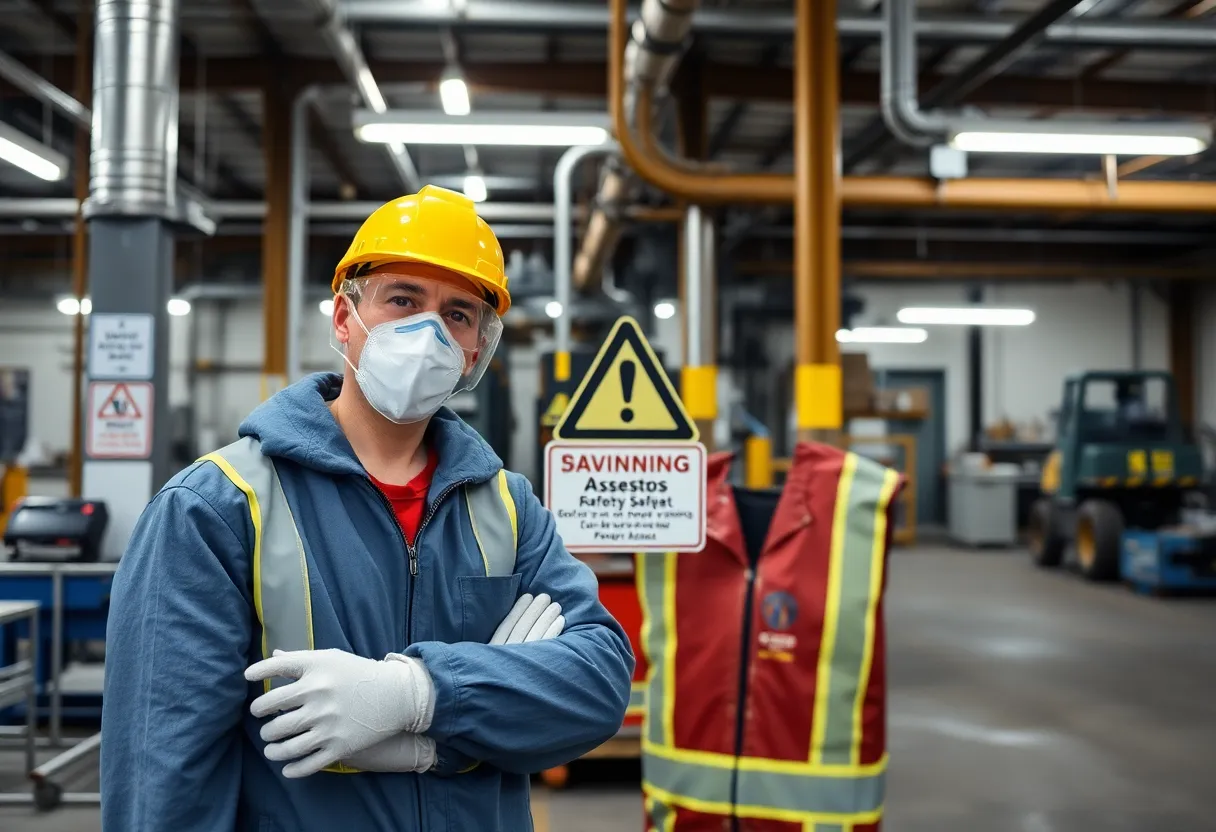News Summary
The future of the Occupational Safety and Health Administration (OSHA) is at risk as lawmakers consider budget proposals that could weaken its ability to protect workers from hazardous conditions, especially concerning asbestos exposure. Proposed changes raise alarms among experts about potential gaps in workplace safety. While some states have better protections, many rely on federal regulations. With OSHA’s future uncertain, it is crucial for workers to remain vigilant regarding asbestos dangers and advocate for their rights and safety measures.
Uncertainty Looms Over OSHA: Vital Protection for Workers at Risk
As ongoing budget proposals are evaluated by lawmakers, the future of the Occupational Safety and Health Administration (OSHA) remains in jeopardy. This uncertainty raises alarms among experts, warning that any drastic changes to OSHA could significantly weaken the agency’s ability to protect workers from hazardous conditions, particularly concerning asbestos exposure.
OSHA plays a crucial role in ensuring workplace safety, especially regarding asbestos. The agency enforces stringent regulations that limit workers’ exposure to this deadly substance, which has long been linked to severe health issues such as mesothelioma and lung cancer. However, proposed legislative changes present a troubling picture, as one bill even suggests the possibility of completely disbanding OSHA.
The Stakes Are High
Critics of dismantling OSHA argue that doing so may free up government funds, yet they also caution that it could leave workers vulnerable to dangerous conditions. The dismantling of OSHA could cause significant gaps in worker safety across the country. The agency has historically set minimum safety standards and enforced penalties for non-compliance, holding employers accountable for maintaining safe work environments. The concern is palpable: without OSHA’s oversight, employers may feel less obligated to comply with safety regulations, leading to a higher risk for workers, particularly those exposed to asbestos.
State Protections at Play
While some states have enacted individual asbestos safety standards that exceed those mandated by OSHA, many states rely solely on federal regulations. This reliance can create dangerous situations where workers in states lacking robust protective frameworks face increased asbestos exposure risks. Moreover, there are concerns that changes to OSHA’s enforcement capabilities could unintentionally lead to a rise in hazardous working conditions.
Understanding the Role of OSHA
Established under the Occupational Safety and Health Act of 1970, OSHA was created with the mission to protect worker health and safety. The agency conducts inspections, investigates complaints, and enforces safety laws, penalizing employers who fail to comply. However, as budget proposals linger and their impact becomes clearer, the agency’s future authority appears precarious.
OSHA collaborates with the Environmental Protection Agency (EPA) to regulate asbestos; OSHA is more focused on worker safety, while the EPA handles exposure in non-occupational settings. As the future of OSHA remains in doubt, it is vital to understand the implications for asbestos regulation, particularly since asbestos exposure continues to be a significant risk in many occupations, with workers in construction, industrial sectors, and even educational facilities facing hazards daily.
Workers’ Rights and Safety Measures
Legal frameworks exist that empower workers to report safety violations, including unsafe asbestos practices, to OSHA and other relevant agencies. Employees must take personal precautions seriously, utilizing protective equipment and reporting unsafe conditions immediately. Employers are also mandated to monitor and keep records concerning employee asbestos exposure for a minimum of 30 years, further emphasizing the importance of strict regulations.
Given the history of asbestos-related diseases in the workplace, it is crucial for organizations to promote awareness and initiate health monitoring among workers. The signs of asbestos exposure often do not present themselves until years later, making early diagnosis and treatment challenging. Workers at risk must undergo specific training related to asbestos safety and hazards.
A Call for Vigilance
In light of these ongoing changes, workers are encouraged to exercise caution. They should refrain from dry cleaning methods in contaminated areas and promptly report any damage to asbestos-containing materials. With the future of OSHA hanging in the balance, increased vigilance and adaptability in workplace safety practices will be necessary to ensure protection against the lurking dangers of asbestos exposure.
Deeper Dive: News & Info About This Topic
HERE Resources
Los Angeles Wildfires: A Hidden Danger of Asbestos Contamination Looms Over Cleanup Efforts
EPA Seeks Pause in Asbestos Regulation Litigation Amid Industry Concerns
EPA Reconsiders 2024 Ban on Chrysotile Asbestos
Florida Jury Awards $18 Million for Asbestos Exposure
Workers Expose Asbestos Dangers, Face Retaliation
Asbestos Exposure: Unveiling a Silent Killer
EPA’s Recent Asbestos Regulations: A Step Forward or Step Back?
Greene County Courthouse Takes On Asbestos Concerns in Upcoming Renovation
International Workers’ Memorial Day: Remembering Asbestos Victims
DIY Home Renovations May Unknowingly Expose Young Enthusiasts to Asbestos Risks



















